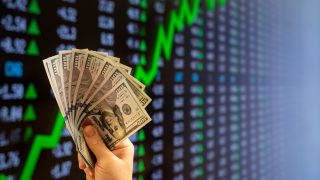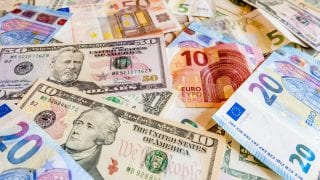For the 26th year running, The Economist magazine has just published its famed Big Mac Index — a tongue-and-cheek way of measuring purchasing power parity (PPP) — that is, the relative over and undervaluation of the world’s currencies.
According to the theory of purchasing power parity, a dollar should buy the same amount of the same good across all countries. As a result, in the long run, the exchange rate between two countries should move towards the rate that equalizes the prices of an identical basket of goods and services in each country.
By comparing the cost of Big Macs — a fast-food hamburger sold in about 120 countries — the Big Mac Index calculates the exchange rate (the Big Mac PPP) that would result in hamburgers costing the same in the United States as they do abroad. Compare the Big Mac PPP to the market exchange rates, and voilà!… you see which currencies are under or overvalued.
For an indicator that was as much a product of English humor as it was serious economic design, it’s surprising how seriously some academics and governments now take the Big Mac Index. In Argentina, the Secretary of Commerce actually regulates the price of Big Macs just so Argentina looks better in the annual index. But the Big Mac Index also provides a snapshot of U.S. inflation versus official government statistics. The price of a Big Mac in the United States today is 16% higher than it was in 2010. Yet the official increase in the Consumer Price Index (CPI) was a fraction of that.
Global Currencies: The Current State of Play
With the British pound depreciating and the Japanese yen appreciating over the past few years, the values of some of the most-traded currencies in the world are as in line with purchasing power parity as they have been in recent memory.
Compared with last year at this time, European currencies have been pummeled across the board — perhaps not surprisingly. Europe always will be more expensive than the United States, thanks to higher consumption taxes. But European currencies haven’t been this close to purchasing power parity since 2006.
As a group, the Scandinavian currencies have always been the most overvalued currencies in the world. A Big Mac in Oslo, Norway, last year cost you twice as much as in the United States. Today, it’s only 63% more expensive. Four years ago, the euro was overvalued by a massive 50%, compared to the U.S. dollar. Today, the euro is trading right at PPP. Last July, the Swiss franc was overvalued against the U.S. dollar by 98%. Today, the Swiss franc is only about 50% overvalued against the dollar.
Moving to Asia, you’ll find that the Chinese yuan remains 42% below its PPP rate. A Big Mac costs $2.45 in China at current exchange rates versus $4.33 at your local mall in Ohio. This seems to confirm that China’s cheap currency acts as a massive subsidy to Chinese exports. And despite threats of being labeled a currency manipulator, recent actions of the Chinese government suggest that it will be pushing down the exchange rate even further, as a way to make Chinese exports more competitive abroad.
As a result of collapsing commodities prices, commodities-based currencies in Australia and Canada have been pummeled. The Australian and Canadian dollars went from being 20% overvalued last year to 8% overvalued and 10% undervalued, respectively. The most surprising drop may have come from Brazil. Last year, the Brazilian real was 52% overvalued on the Mac Index. Today, it is overvalued by just 17%.
The Big Mac Index: What You’d Trade Today
So, if you were running a currency hedge fund, what would the Big Mac Index tell you to trade? Well, if you use the principal of buying undervalued currencies — and selling the overvalued ones — here is what you’d come up with.
Among the “big six” currencies traded by foreign exchange traders, most are closely in line with purchasing power parity (PPP). The Swiss franc (FXF) is the only major currency that is massively overvalued by about 50%. So, you’d sell that. The Australian dollar (FXA) is only slightly overvalued by roughly 8%. That makes it hard to play, unless you also think its economy will be hit unusually hard by the slowdown in China. The Canadian dollar (FXC) is now undervalued by about 10% — a significant drop from last year when it was overvalued. But betting on it is hardly a home run. After a big drop this summer, the euro (FXE) is trading just about where it should be. The Japanese yen (FXY) and the British pound sterling (FXB) are also roughly in line with their PPP values.
Thanks to many new currency ETF offerings, you could also bet on some less mainstream currencies, as well. Looking purely at the original Big Mac Index, you’d buy the Chinese yuan (CYB) (42% undervalued), the Russian ruble (FXR) (45% undervalued), the South African rand (SZR) (46% undervalued) and the Mexican peso (FXM) (21% undervalued). And you’d probably sell the Scandinavian currencies like the Swedish krona (FXS).
Overall, the major currencies are as in line with their PPP values as I’ve ever seen them. That makes currencies, as with almost any asset class in the world today, a hard place to make money.
Sincerely,

Nicholas A. Vardy
Editor, The Global Guru



